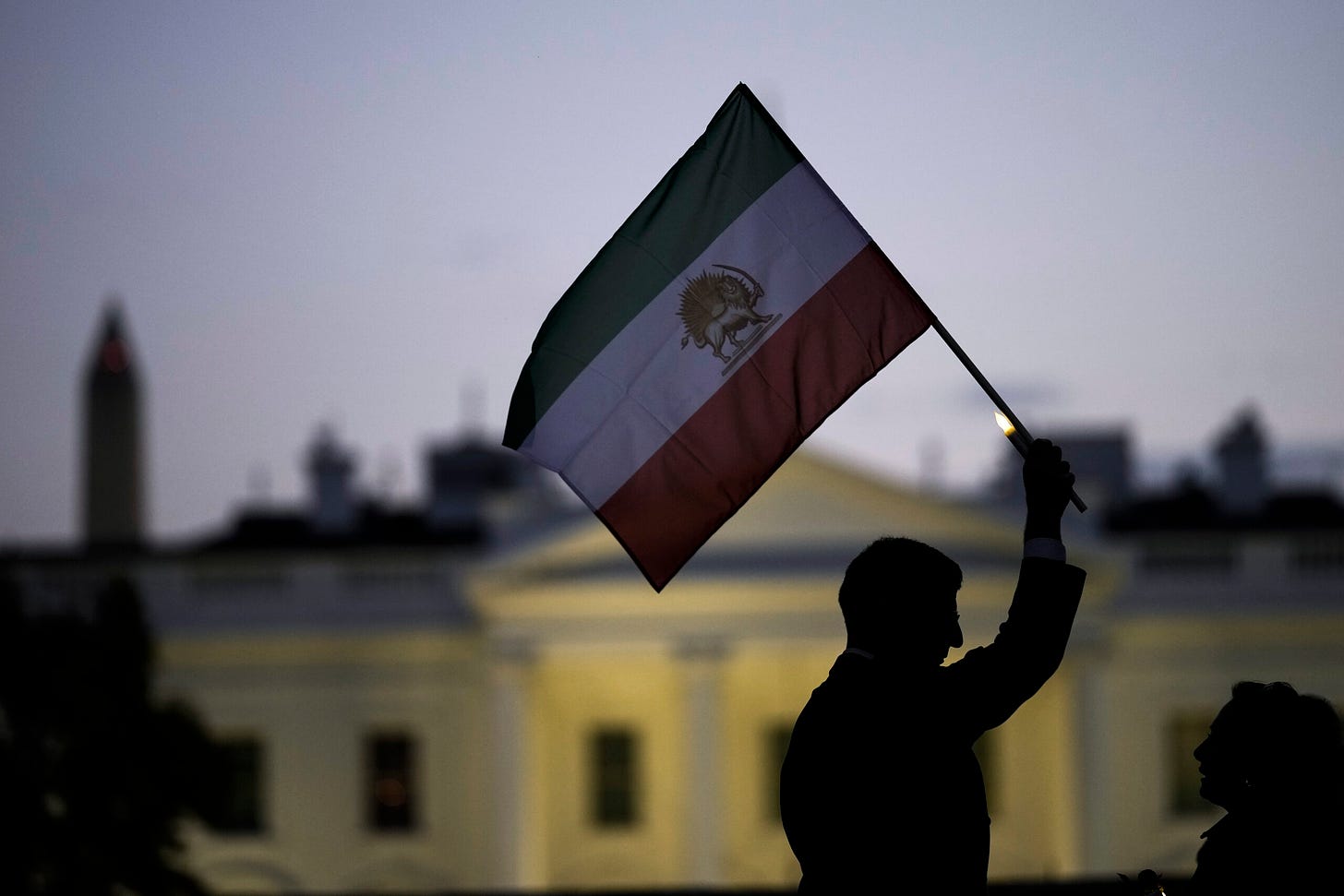Now Is the Time to Solve the Iran Problem
For too long, American policy has treated Iran like one big nuclear program.

Hoping for the regime in Iran to collapse has long been an implicit part of U.S. posture toward the Islamic Republic. The Obama administration hoped that the 2015 Joint Comprehensive Plan of Action would stall Iran’s nuclear advances for the next 15 years—long enough for the Islamic Republic to either reform or collapse. Meanwhile, the Biden administration has never looked at Iran policy beyond Iran’s nuclear weapons program. A week after Joe Biden assumed office, his national security advisor, Jake Sullivan, told the Washington Post that the first imperative of the administration was putting Iran’s nuclear weapons program “in a box.” Only then would the administration move on to the rest of the troubles Iran has been causing. But halfway through Biden’s term, the administration has failed to achieve even the first objective. It seems at times that the Biden team has moved on from Iran altogether.
All the debates over the last decade about the Islamic Republic’s nuclear program have obscured the fact that we have other issues with the regime beyond its nukes. And now that a democratic revolt is underway in Iran, the Biden administration is letting the opportunity to help the country democratize slip through its grasp. U.S. attempts to support the protesters as they seek to end more than four decades of theocratic despotism have been fitful, few, and far between.
The administration was quite clear that it wanted to disengage from the Greater Middle East and “park” Russia so it could focus on China. The same personnel tried to “pivot to Asia” and away from the Greater Middle East during the Obama administration. The policy didn’t work from 2009 to 2017, so for take two, they rebranded to “right-sizing” the U.S. involvement in the Middle East.
Reaching a nuclear agreement with Iran has been a core element of this policy. In 2016, Barack Obama explained that he had hoped for the agreement to empower Iran, an enemy, to serve as a balance against Saudi Arabia, a partner. The agreement succeeded in turning Saudi Arabia into a foe, but Iran didn’t become a friend. Despite the manifest failure of Obama’s Middle East policy—only partially caused by Donald Trump’s decision to withdraw from the nuclear deal—the Biden administration appears content to continue along the same path, treating Iran only as a big nuclear program that could be cleanly severed from its other behavior, its region, and the rest of the world.
One reason why the Biden administration is so narrowly focused on Iran’s nuclear program is that it’s a discrete, theoretically solvable problem. Dealing with the full scope of Iran’s malign behavior is a much more difficult problem. Yet, like Russia and North Korea, Iran will demand attention, especially when the administration is least inclined to give it.
Behind the scenes, administration officials say that protests erupt in Iran regularly and then they “disappoint us” and go away. With this mindset, it failed to prepare itself to take advantage of domestic dissent while imagining either that the regime will fall quickly or that the protests would go away. This was more or less the Obama administration’s approach to the Syrian Civil War.
Protests do erupt in Iran regularly, and if the administration finds them “disappointing,” that may be because they too often garner not a peep of support from Washington. One indication of the disappointment the Iranians feel: They have stopped carrying English-language banners.
What is the Biden administration’s preferred end-state for Iran? Its myopic commitment to negotiations suggests that it sees a new nuclear agreement not as a means to advance American interests and regional security, but as an end in itself. Pilots sometimes call this phenomenon “target fixation”—and it can cause them to fly into the things they’re supposed to shoot at. The protests in Iran present the first real possibility in decades of fundamental change to the fundamentalist regime, which could solve the nuclear issue—along with the international terrorism, domestic human rights abuses, and support for Russia’s war, too. The Biden administration appears incapable of accepting the gift the Iranian people are offering it.
The administration has a self-destructive tendency to compartmentalize problems. The regime of the mullahs isn’t just a problem for the Iranian people or Iran’s neighbors. Iran is a major oil supplier to China. Before U.S. sanctions, it also was a major oil supplier to U.S. allies in Europe and Asia. The Biden administration has alleged that Iran is going to supply Russia with ballistic missiles, which Iran denies. The Islamic Republic recently enacted a 25-year security agreement with China, which, rumors suggest, might include a Chinese naval base in the Persian Gulf. In March 2021, Biden rightly commented that he’d been worried about the agreement for a year.
It would have been silly for the Biden administration, upon taking office, to have predicated its Iran policy on once-in-a-lifetime revolts. But to think of the current revolt as an unpredictable once-in-a-lifetime revolt suggests missing the trends of growing and intensifying protests over the past decade. The people inside the administration nonetheless missed those trends, and now they find themselves paralyzed by a phenomenon they wrongly describe as routine. To paraphrase Dwight D. Eisenhower, plans are of no particular value, but planning is indispensable. The Biden administration is so fixated on repeating the Obama-era policy that it has lost sight of how much Iran has changed, internally and in its foreign conduct. If they need a refresher, there are hundreds of thousands of Iranians eager to remind them.



